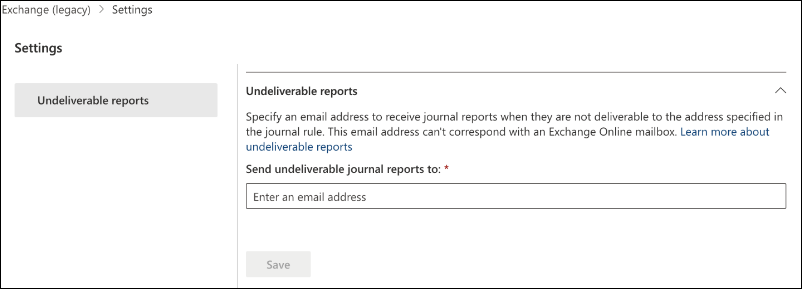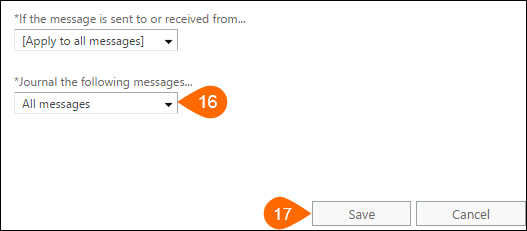| Editions Available: All Editions | Audience: |
Enabling the Bullhorn Email and Calendar Integration with Microsoft Office 365 or Exchange 2016
Bullhorn is working with Microsoft on authentication updates. This page will soon be updated with revised steps for enabling the Outlook Gadget once changes are finalized.
Before You Begin
There are a number of steps both you and Bullhorn must complete in order to enable the Microsoft Office 365 / Microsoft Exchange 2016 integration for Bullhorn.
These instructions are intended for an IT professional. You may need to involve your IT rep or Microsoft Support to complete this set up.
- Your tracker address is provided by Bullhorn Support. If you do not know your tracker address, contact Bullhorn Support.
- This article is for setting up the email integration. If you are looking for information on how email tracking works, see the related article Bullhorn Email Overview and Common Questions.
You can use Journaling to forward both inbound and outbound emails from Outlook into the Bullhorn Activity Center. Use the below steps to set up the journaling rule and distribution group.
Email tracking enables the Bullhorn for Email Gadget. This means that any emails in your system prior to setting up tracking will not be available to be used with the Gadget.
You need the following:
-
You should add Bullhorn to your Sender Policy Framework. See this article for more information.
-
You must link your email domain to Office 365 / Microsoft Exchange 2016 for the email integration to work.
Contact Microsoft Support for assistance on completing this requirement.
-
If you do not want all emails for all users to track, you will need to build a distribution group of those email addresses you would like to have track.
For more on how to do this, see this Microsoft help article.
-
Journaling capabilities and Admin access to your Exchange environment.
If journaling isn’t supported, you can still integrate your email, but the Gadget won’t be available.
-
An external email address to which to send reports A free Gmail or Yahoo account would be acceptable.
For more on why you need this address, please see Create Undeliverable Report Contact below.
-
Email tracking address provided by Bullhorn Support.
Navigate to Purview Portal
Navigate to the Microsoft 365 Admin Center > Show All > Admin Centers > Microsoft Purview (or directly via Purview portal).
Create Undeliverable Report Contact
Because Journaling automates sending copies of emails, your Exchange environment may receive what is called a "Non Deliverable Report" (NDR) that contains information on why the individual email copy Exchange attempted to send was rejected.
You need to create an external contact to send these reports to when setting up a journaling rule. For more guidance on what the NDR means or contains, contact your Exchange support.
- On the left-hand side, select Settings.
-
Under Solution settings, select Data Lifecycle Management.
-
Select Exchange (legacy).
- Fill out the field Send undeliverable journal reports to with an external email address.
- Select Save.
Your alternative mailbox has been saved.
Create Journaling Rule
The address in step 6 is provided by Bullhorn Support and should be formatted similar to abc.123@slXtracker.bullhornstaffing.com. X will be a number representing your cluster. If your tracker address is not similar, Contact Bullhorn Support to verify your tracker address.
-
Within the Microsoft Purview Portal, navigate to the top search bar.
-
In the search bar, type "journal".
-
Click the Journal Rules row that appears (or navigate to Journal Rules).
- Select New rule.

- In the Send journal reports to field, enter your Bullhorn tracker address in all lowercase letters.
- Using capital letters in the tracking address will prevent the integration from working.
- Using capital letters in the tracking address will prevent the integration from working.
- Enter the name for your Journaling rule such as Bullhorn Tracking.
- Use one of the options below to determine which messages will track and for what users. You will want to either track all emails for all users or use a more selective process with the Journaling rule.
It is recommended you follow option 1. Emails that aren't tracked can't be added at a later time.
- From the If the message is sent to or received from field, select [Apply to all Messages].
- From the Journal the following messages drop-down, select All Messages.
This option requires you to update the rule every time you add a new user. For this reason, we highly recommend option 1.
This option requires a pre-existing group generated in Exchange of all the users for which you would like to track their email. You should be able to create this group within the Exchange environment by going to Recipients > Groups and click the plus (+) icon to generate. If this is not available, you will want to reach out to Microsoft Support for assistance.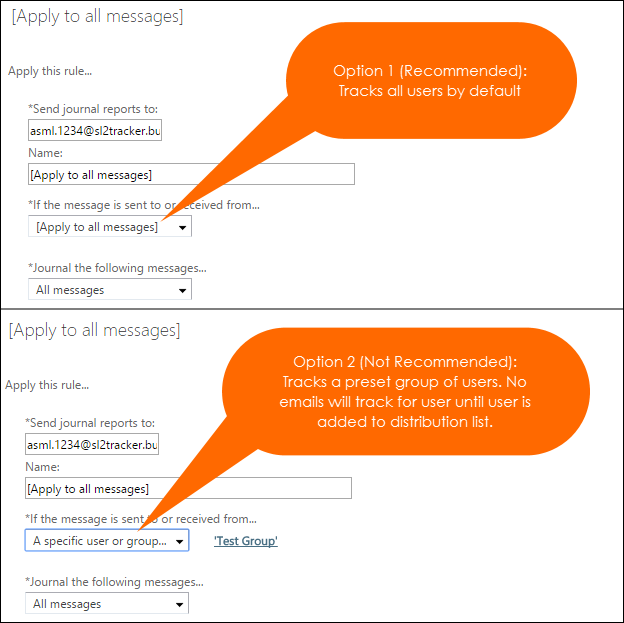
Set up the Bullhorn For Email Outlook Gadget
Not available for Team Edition.
Now that you've set up your email tracking, you can enable the Bullhorn for Email Gadget. This is optional but highly recommended.
- From the menu in the upper-left corner, select Add-Ins.
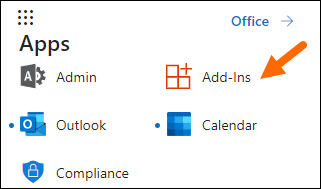
- Search AppSource for .

- Click Get it now in the Bullhorn for Email app.
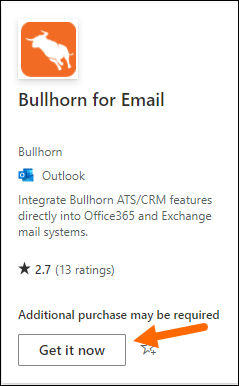
- Check the box to allow Microsoft permissions and click Continue.
- Choose who should have access to the Bullhorn for Email app and click Next.
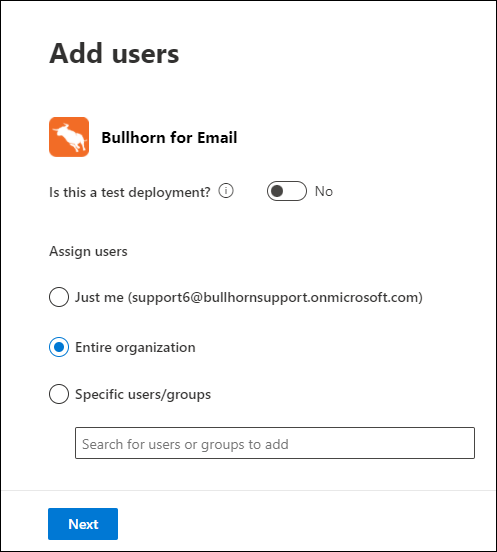
- Read about App Permission and Capabilities and click Next.
- Click Finish Deployment at the bottom of the window.
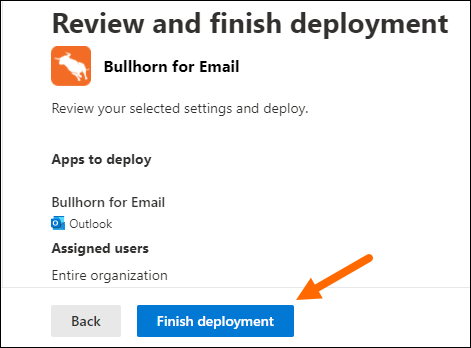
You can test your email integration by creating a record in your database attached to an external email address (such as a free gmail.com or outlook.com account) and sending emails to and from that address.
It may take up to 45 minutes for the email to appear on the record after initial generation of the Journaling rule. After the emails begin to track, you can expect emails to appear within moments of sending or receiving the email.
Next Steps
Your basic email integration is complete. Depending on your needs, you may want to enable these additional features:
-
Notify Bullhorn Support once setup is complete. They must take final steps to finish the integration.
- Launch Outlook from Bullhorn when selecting email addresses. You may need to adjust your computer settings. See this Microsoft article for details.
-
See Enabling Auto Accept for Appointments in Outlook to have Outlook automatically accept Bullhorn appointment invites and remove them from your inbox.
This is optional. Calendar invites will still work without it. Auto Accept simply automates the process so invites are recognized and accepted without showing up as emails.
